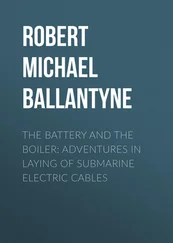Michael Neufeld - The Rocket and the Reich
Здесь есть возможность читать онлайн «Michael Neufeld - The Rocket and the Reich» весь текст электронной книги совершенно бесплатно (целиком полную версию без сокращений). В некоторых случаях можно слушать аудио, скачать через торрент в формате fb2 и присутствует краткое содержание. Город: Washington, Год выпуска: 2013, ISBN: 2013, Издательство: Smithsonian Books, Жанр: История, military_weapon, на английском языке. Описание произведения, (предисловие) а так же отзывы посетителей доступны на портале библиотеки ЛибКат.
- Название:The Rocket and the Reich
- Автор:
- Издательство:Smithsonian Books
- Жанр:
- Год:2013
- Город:Washington
- ISBN:978-1-58834-466-3
- Рейтинг книги:3 / 5. Голосов: 1
-
Избранное:Добавить в избранное
- Отзывы:
-
Ваша оценка:
- 60
- 1
- 2
- 3
- 4
- 5
The Rocket and the Reich: краткое содержание, описание и аннотация
Предлагаем к чтению аннотацию, описание, краткое содержание или предисловие (зависит от того, что написал сам автор книги «The Rocket and the Reich»). Если вы не нашли необходимую информацию о книге — напишите в комментариях, мы постараемся отыскать её.
The Rocket and the Reich — читать онлайн бесплатно полную книгу (весь текст) целиком
Ниже представлен текст книги, разбитый по страницам. Система сохранения места последней прочитанной страницы, позволяет с удобством читать онлайн бесплатно книгу «The Rocket and the Reich», без необходимости каждый раз заново искать на чём Вы остановились. Поставьте закладку, и сможете в любой момент перейти на страницу, на которой закончили чтение.
Интервал:
Закладка:
Not far from the theater, in the quarters of the Army Ordnance Office, Lieutenant Colonel Karl Emil Becker (1879–1940) had begun to investigate the revival of the rocket as a weapon. Since the mid-nineteenth century, when rifled, breech-loading artillery guns had greatly improved accuracy and range, the black-powder rocket had fallen out of favor as a bombardment weapon. Military experts and lay people alike came to regard this traditional form of the rocket, which burned a gunpowder-like fuel in a metal or paper casing, as little better than a toy. In World War I rockets had been used only for signal or illuminating flares and other minor applications. In the interwar period, however, improved possibilities for the safe manufacture and storage of solid propellants, including new smokeless powders, made rocketry again more interesting to the military. Becker, who had a doctorate in engineering and headed Section 1 (ballistics and munitions) of Army Ordnance’s Testing Division, was especially interested in solid-fuel rockets as a means of launching poison gas against enemy troops on the battlefield. 2
The fact that the Allied-imposed Versailles Treaty of 1919 omitted any mention of rocket development reinforced Becker’s interest in the technology. Like most of his fellow officers, he was an ultranationalist who yearned for the day when a new right-wing authoritarian regime could overthrow the treaty’s onerous limits on German military power. Until that day, however, Becker and his compatriots would use all available means to circumvent the treaty, which restricted the Reich to an Army of 100,000 lightly armed men, a tiny Navy, and no air force at all. Not only had the Army maintained hidden units to violate its size limit, it had conducted covert research into poison gas, aircraft, tanks, and other banned weapons at home and abroad, most notably in the Soviet Union. The investigation of legal technologies like the rocket was yet another way to prepare for rearmament, an increasing concern of the Weimar military in the relatively stable years of the late 1920s. But Becker’s interest in rocketry as a means of illegal chemical warfare shows that finding a loophole in the treaty was not central to his decision to look into the technology. Of more significance was the Versailles ban on heavy artillery, an important class of weapons that was Becker’s specialty. Provided that rockets could be made sufficiently powerful, they could replace not only short-range battlefield weapons but also long-range heavy guns. 3
If Becker had military reasons for taking up rocketry, the Weimar spaceflight fad also undoubtedly had a crucial impact. The fad had begun with Hermann Oberth’s seminal 1923 book, Die Rakete zu den Planetenräumen (The Rocket into Interplanetary Space) . Oberth (1894–1989), a member of the German minority of Transylvania, was an unwilling Rumanian citizen after the Hapsburg Empire’s collapse in 1918. His slim volume had defended the radical concept of manned spaceflight and had made concrete suggestions for overcoming the technical difficulties involved. Most notably, Oberth’s book showed that by mixing and burning a liquid fuel like alcohol with an oxidizer like liquid oxygen, one could dramatically improve performance over the traditional black powder rocket. At first the book attracted little notice, but in 1924 Oberth’s cause was taken up by the irrepressible Max Valier, an Austrian writer and self-proclaimed astronomer residing in Munich. 4
Valier’s articles, books, and speeches did much to popularize the idea of spaceflight with the Weimar public. Although most of Oberth’s ideas had been anticipated by, among others, Konstantin Tsiolkovsky in Russia and Robert Goddard in the United States, their insights were inaccessible to lay and specialist readers alike. Tsiolkovsky’s publications went back as far as 1903 but were buried in obscure Russian periodicals. Goddard’s “A Method of Reaching Extreme Altitudes” (1919–20) had avoided explicit references to liquid-fuel rocketry and manned spaceflight. Even so, his discussion of a staged powder rocket to hit the moon had unleashed a wave of sensationalism and ridicule in the newspapers that made the shy physicist even more secretive than before. His impact in Europe was largely confined to wild rumors in the popular press about his activities. The fact that he had launched the world’s first liquid-fuel rocket in 1926 remained virtually unknown for a decade afterward. 5
Oberth’s intellectual boldness and Valier’s knack for publicity, in contrast, made the spaceflight idea more visible and respectable in Germany than almost anywhere else. In 1927 Valier participated in the formation of the Society for Space Travel, often known by its German abbreviation, VfR. Until 1930 the VfR was headquartered in Breslau (now Wroclaw, Poland), because its first president was Johannes Winkler, a church administrator and frustrated engineer there. Winkler’s new journal, Die Rakete (The Rocket), became the organ of the society. But it was Valier’s alliance with Fritz von Opel, heir to the car manufacturing fortune, that finally put rocketry on the front pages. In order to generate publicity, Opel and Valier used commercial black-powder rockets to power spectacular race car demonstrations in April and May 1928. Those experiments unleashed a wave of publicity in the media, and other stunts followed with rail cars, gliders, bicycles, and even a Valier rocket ice sled. Their visibility also strengthened Fritz Lang’s resolve to make the moon flight movie he had been thinking about since Metropolis . 6
Although some skepticism and ridicule had accompanied all that activity, especially speculations on the subject of spaceflight, the 1928–29 popular fad showed that, with the possible exception of Soviet Russia, Germany responded more enthusiastically to the potential of the rocket than any other country. Nationalism no doubt played a key part here. Germans tended to seize on almost any sign of their technological superiority or their rapid recovery from the humiliations of the war and Versailles. Despite bitter political and ideological divisions in the country, technological progress was desired by almost everyone, and the rocket fad provided escapist entertainment for the new mass culture of the 1920s. 7
Thus, when Becker began to investigate the rocket in 1929, he did so against a background of media publicity and highly visible demonstrations of powder rockets in action. His curiosity may also have been piqued by discussions, mostly on the margins of the spaceflight movement, of the possibility of a large ballistic missile based on liquid fuels. Oberth, for one, had discussed the possibility of launching poison-gas attacks on enemy cities with intercontinental rockets in the enlarged 1929 version of his book, Wege zur Raumschiffahrt (Ways to Spaceflight), apparently because he had received so many queries from the public about the idea. He considered it impractical for the next decade or two, however, because of the difficulty of accurately guiding the missile to its target. 8
At the end of 1929 Becker asked for and received permission from the Reich Defense Minister for a small solid-fuel rocket program. Testing of commercial black-powder units began shortly thereafter. Assisting the fifty-year-old Becker were a small number of junior officers with engineering training. His second in command in the ballistics and munitions section bore the impressive aristocratic moniker d’Aubigny von Engelbrunner Ritter [Knight] von Horstig. Captain von Horstig (b. 1893) also had an engineering doctorate and shared his superior’s World War I experience in the artillery. Three slightly younger veterans would soon emerge as the central figures in the administration of the early program: Erich Schneider, Walter Dornberger, and Leo Zanssen. 9
Читать дальшеИнтервал:
Закладка:
Похожие книги на «The Rocket and the Reich»
Представляем Вашему вниманию похожие книги на «The Rocket and the Reich» списком для выбора. Мы отобрали схожую по названию и смыслу литературу в надежде предоставить читателям больше вариантов отыскать новые, интересные, ещё непрочитанные произведения.
Обсуждение, отзывы о книге «The Rocket and the Reich» и просто собственные мнения читателей. Оставьте ваши комментарии, напишите, что Вы думаете о произведении, его смысле или главных героях. Укажите что конкретно понравилось, а что нет, и почему Вы так считаете.












